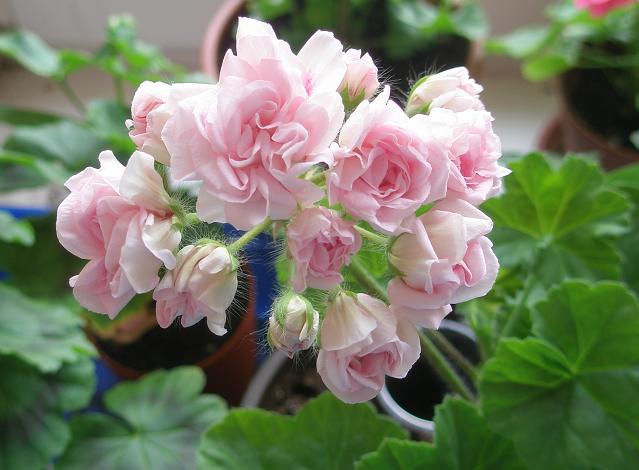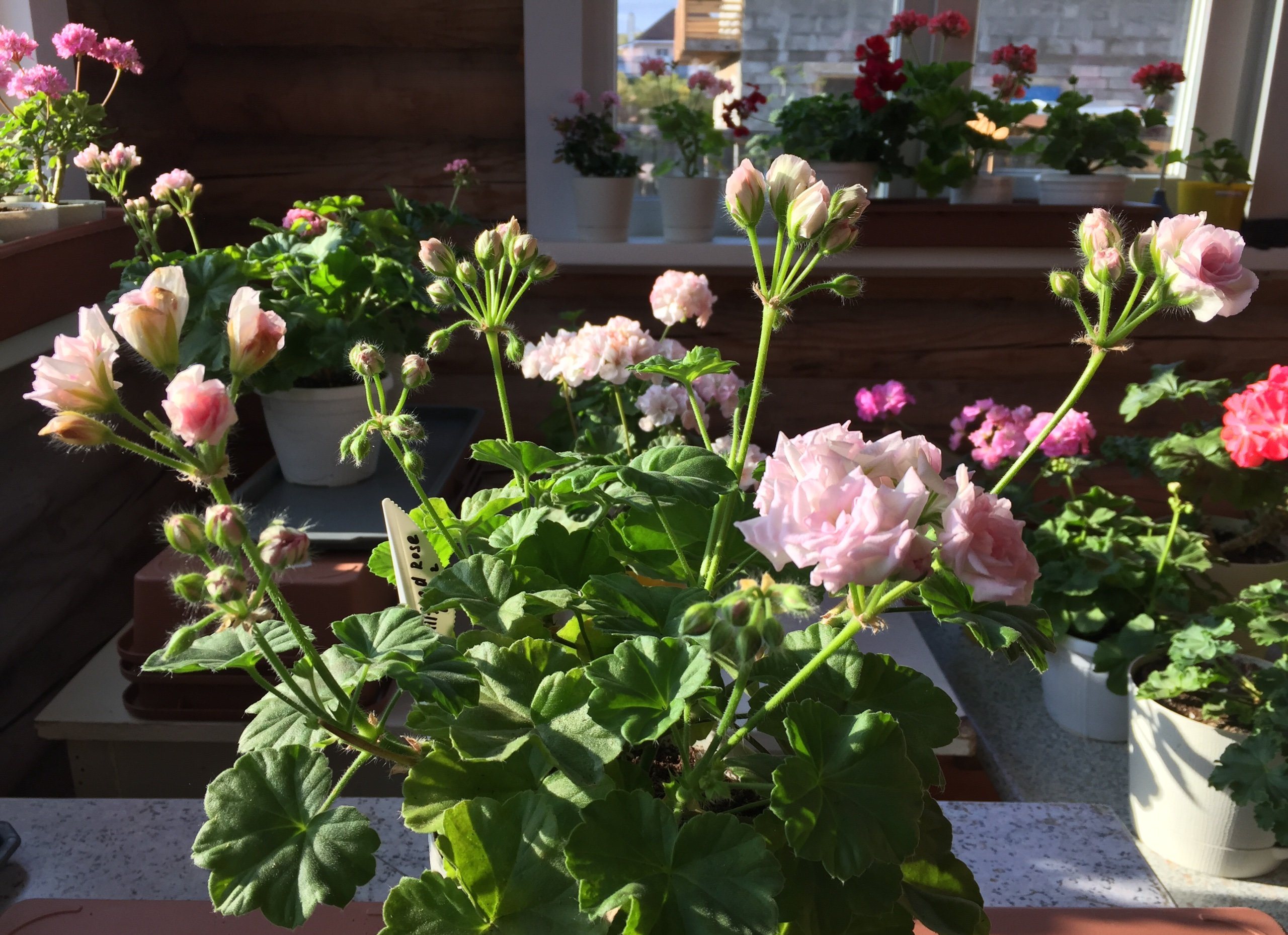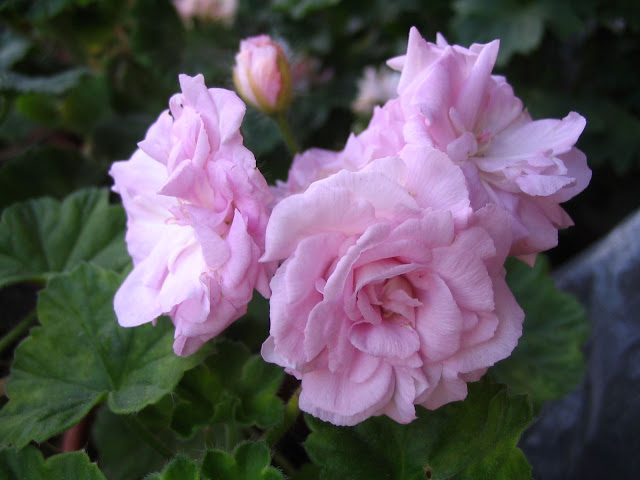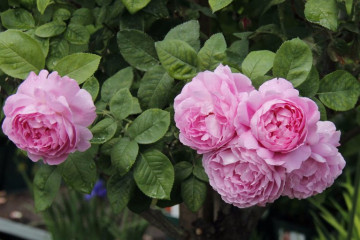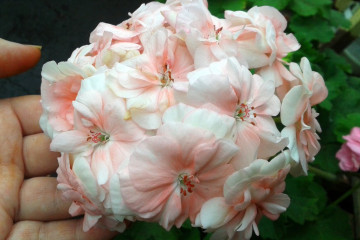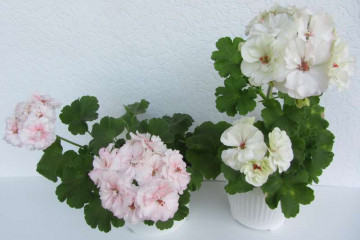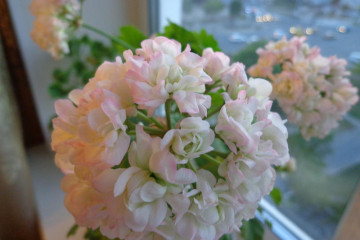Pelargonium Millfield Rose
Content:
Pelargonium Millfield Rose is a popular hybrid crop with excellent decorative properties. To succeed in growing a flower, you need to provide it with quality care that will correspond to the varietal description and characteristics.
Pelargonium Millfield Rose (Milfield Rose) - what is this hybrid variety
Pelargonium Milfield Rose belongs to the Geraniev family. Its main difference is the unusual inflorescences that look like small roses. By the way, the shade of the petals is also soft pink, which the owners really like.
Terry inflorescences are characteristic of Millfield Rose pelargonium. Many consider these plants to be the real first ladies among flowers, and admit that even a rose is not so beautiful.
Brief description, history of origin or selection, what it looks like
Pelargonium Milfield Rose combines the characteristics of a zoned and ivy crop. These features were reflected in the decorative properties of the culture.
- The color and shape of the leaves indicate that it belongs to the zonal varieties.
- At the same time, the development and shape of the shoots are more reminiscent of ivy-leaved crops.
The plant has large and voluminous inflorescences. They give the flower decorative properties. The severity of the flowers creates the need for a garter and timely pruning. Otherwise, the culture is transformed into an ampelous plant. Moreover, its flowering will be less abundant and lush.
In the description of Pelargonium Millfield Rose, it is said that the bushes have large and bright leaves. They look pretty and decorative enough.
In saturated light, a brown strip can be seen on the leaves, which confirms that the variety belongs to the zonal varieties.
How to care for Milfield Rose pelargonium at home
To succeed in growing a plant, he needs to provide complete and high-quality care.
Illumination and temperature conditions
For the culture, you need to choose the optimal temperature regime. It should be at +20 .. + 27 degrees.
In order for buds to form on the bushes and double inflorescences to appear, the plant needs sufficient daylight hours. It should be at least 14 hours. Sometimes there is a need to use phytolamps. Thanks to this, it is possible to achieve winter flowering of the culture.
With the arrival of heat, the plant can be planted in open soil. For him, you need to choose a well-lit place. It is also permissible to take out the bushes to the balcony or terrace. In this case, you need to ensure that there is partial shade over the plant and the bushes do not get burned.
Watering rules and humidity
Pelargonium needs to be watered abundantly, but it is not recommended to overmoisten the soil. Overdrying of a lump of soil is also undesirable. In this case, there is a risk of falling off the leaves of the crop, which reduces its decorative properties.Excess moisture provokes rotting of the roots - in such a situation, it will not be possible to save the culture.
Water the soil as it dries. In the winter season, the frequency of soil moisture is significantly reduced, because pelargonium is resting.
Spraying the crop is not recommended. In this case, the leaves must be systematically cleaned of dust. A barely damp cloth is suitable for this manipulation. Dry the flower in the sun immediately after the procedure.
Top dressing and soil quality
In order for the plant to delight with lush flowering as long as possible, the bush needs additional nutrition. Feeding should be used very carefully. An excess of fertilizer will lead to undesirable consequences.
- In the spring, it is recommended to fertilize this representative of geraniums with nitrogen agents. Thanks to such preparations, it is possible to achieve an increase in green mass.
- Before the beginning of the formation of buds, nitrogen-containing agents are canceled. During this period, the bushes need to use potassium and phosphorus. Thanks to such substances, beautiful inflorescences are formed.
For feeding pelargonium, you can use combined mineral products that are sold in stores - they have a balanced composition.
Flower container size
A medium-sized pot is suitable for pelargonium. Too spacious capacity leads to active growth of the bush. At the same time, flowering can be very poor.
As the culture develops, a large capacity is selected and the Milfield Rose pelargonium is transplanted.
Pelargonium pruning
To get a beautiful compact plant, it needs to be pruned sometimes. The procedure promotes abundant flowering and rejuvenation of the culture. Shoot development should be monitored throughout the growing season. With the onset of autumn, rejuvenating pruning is performed. In this case, you need to remove old and diseased branches.
Features of flowering plants
The culture is characterized by lush and abundant flowering, attractive pink-shaped inflorescences appear on the shoots. This makes the shrub decorative.
The flowering of the plant lasts from spring to autumn. During this period, it serves as a real decoration of the room. In winter, the culture begins a period of dormancy. At this time, you need to reduce the number of watering and abandon fertilization.
Why the flowering period may not come
The lack of flowering may be due to a violation of agrotechnical recommendations. This problem occurs when improper watering or a violation of the fertilization regime.
Flower propagation by cuttings
It is recommended to propagate the culture by cuttings. To do this, in a healthy plant, you need to cut off the stems 15 cm high. This procedure can be carried out in spring or autumn. It is necessary to root the cut fragments in fertile soil.
Growing problems, diseases and pests
When growing a plant, there is a risk of yellowing and leaf fall. Such problems are most often caused by a lack of lighting.
With excessive watering, watery blisters appear on the leaves. This means that the plant has no time to evaporate moisture.
In the fresh air, geraniums can become infected with fungal infections.
How to deal with them
To prevent fungal infection, the bushes should be treated with complex fungicides. To cope with harmful insects, it is recommended to use insecticidal preparations.
Pelargonium Milfield Rose is a wonderful decorative culture that serves as a real decoration of the room. In order for a plant to bloom profusely and luxuriantly, it needs high-quality care.
